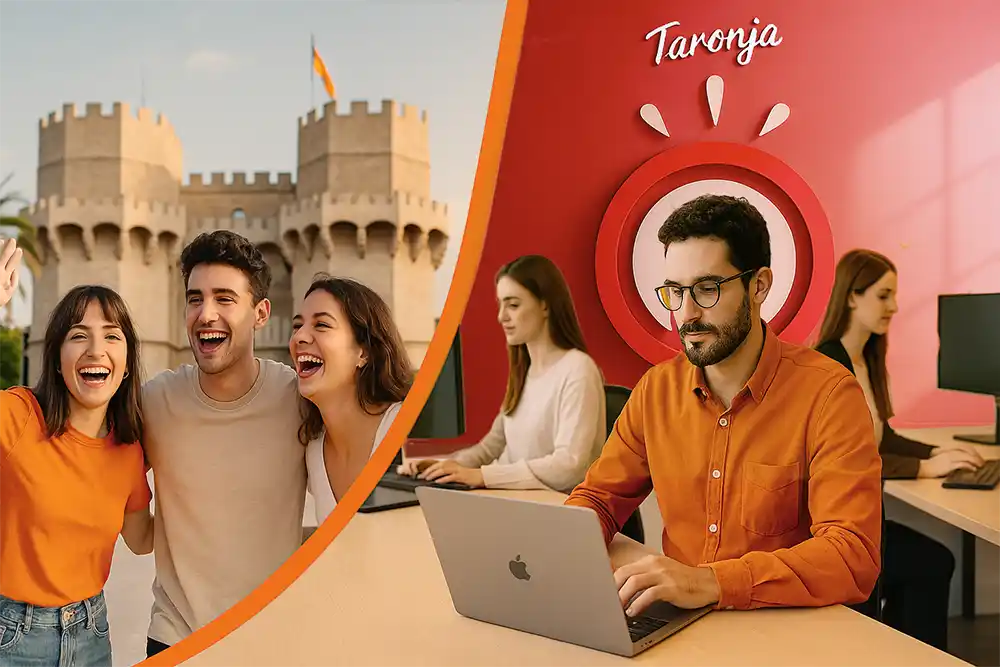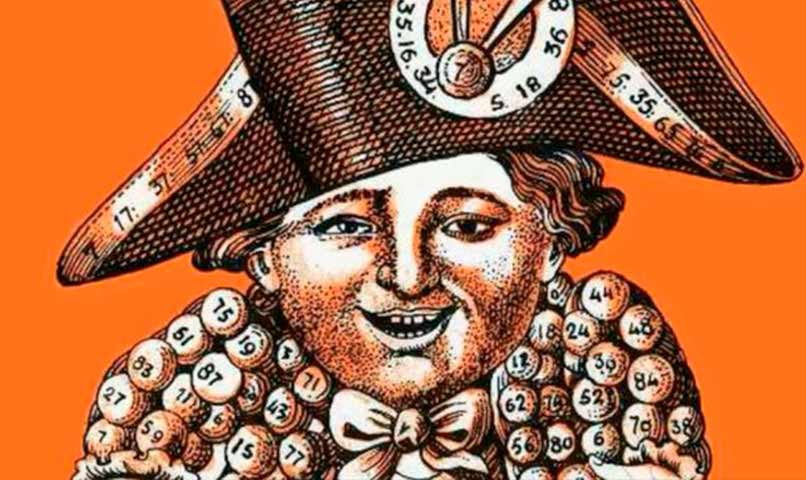La Catedral de Valencia es uno de los edificios más importantes de nuestra ciudad.
Este magnífico edificio, fusionando diversos estilos a lo largo de los años, oculta secretos apasionantes y tesoros artísticos que esperan ser descubiertos. Desde el enigma del Santo Cáliz que se dice que usó Jesús en la Última Cena hasta los frescos renacentistas ocultos durante décadas, la catedral desvela relatos de fe, arte y leyendas. Acompáñanos en un recorrido por los pasillos y las narrativas que han forjado este icónico lugar, donde cada piedra cuenta su propia experiencia. ¿Quieres saber más?
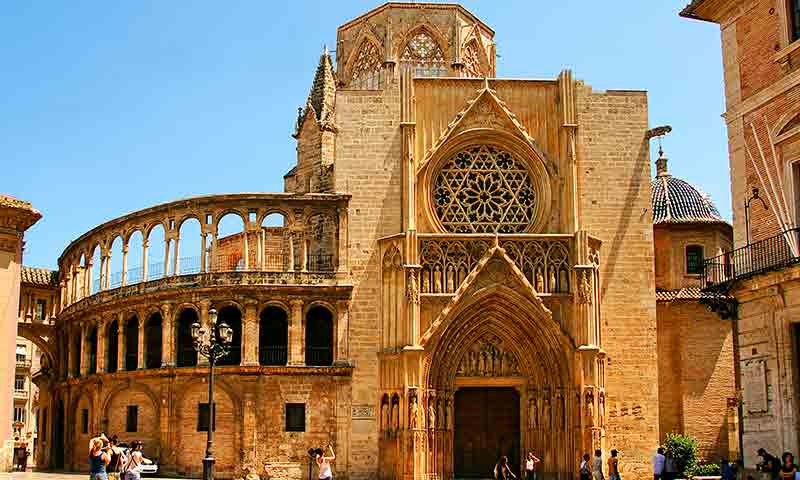
Una mezcla de diferentes estilos arquitectónicos
La construcción de la Catedral de Valencia se remonta al siglo XIII.
Concretamente, la primera piedra se puso en la puerta de la Almoina, el 22 de junio de 1262.
El edificio se levantó sobre la antigua mezquita árabe de Balansiya (nombre con el que los musulmanes conocían a nuestra ciudad) que, a su vez, se había, construido sobre la antigua catedral visigótica y por encima de un antiguo templo romano dedicado a Júpiter o Diana.
En el siglo XIV, se terminaron sus tres partes más importantes: la Puerta de los Apóstoles, el aula capitular y el cimborrio.
Casi un siglo después, se ampliaron sus naves, y en el año 1425 concluyó la construcción del campanario, conocido por los valencianos como «El Micalet».
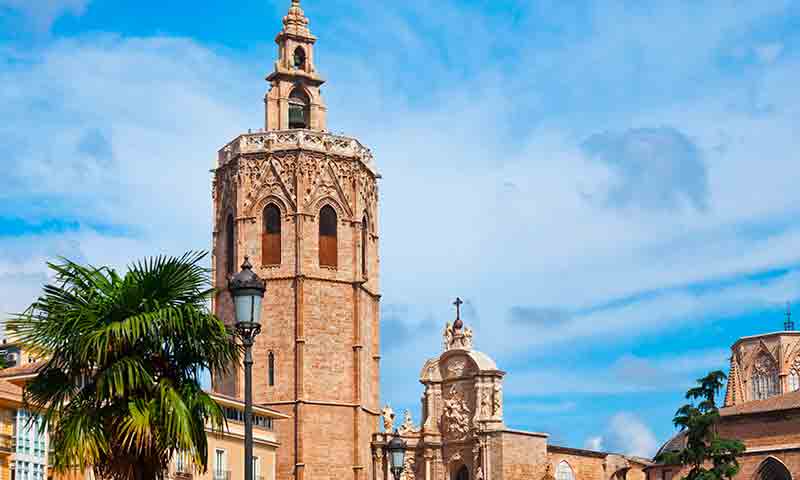
Este curioso nombre se debe a que su campana mayor, que es la que marca las horas, fue bautizada el día San Miguel. Por eso a esta torre también se le llama popularmente «el Miguelete».
El Micalet tiene ¡207 peldaños! dispuestos en una escalera de caracol y, si eres valiente y estás en forma, podrás subirlos durante tu estancia en Valencia.
En el siglo XVIII la Catedral valenciana tuvo otra gran reforma.
Por eso, sus tres puertas principales tienen tres estilos artísticos de tres épocas diferentes: la puerta de la Almoina es románica; la puerta de los Apóstoles, gótica; y la puerta de los Hierros, barroca.
Hechos más importantes sucedidos en la Catedral de Valencia

Como centro espiritual y de poder la ciudad, la Catedral de Valencia ha sido testigo de importantes hechos históricos.
Uno de los más importantes fue la entrega del Santo Cáliz por parte del rey Alfonso V de Aragón, apodado el Magnánimo, el 18 de marzo de 1437.
Este día marcó su historia para siempre.
De hecho, según la tradición, aquí se conserva desde entonces el Santo Cáliz, un objeto religioso al que se le atribuyen poderes místicos y que ha sido muy venerado y codiciado a lo largo de los siglos.
La leyenda es esta: al parecer, San Pedro conservó la copa en la que Jesús bebió después de la Última Cena y la llevó a Roma, donde los sucesivos Papas la custodiaron hasta que, en el siglo III, el emperador Valeriano empezó a perseguir a los cristianos.
El Pontífice Sixto III le entregó entonces la reliquia a su diácono de confianza, un hispano (San Lorenzo) que la trajo hasta Huesca y la escondió en un monasterio de los Pirineos.
El Santo Cáliz estuvo escondido allí hasta que, en el siglo XIV, fue entregada al rey de Aragón, quien la custodió en Zaragoza.
Después, uno de sus sucesores la depositó en la Catedral de Valencia.
Otros hechos importantes sucedidos en esta Catedral: aquí fueron designados papas Calixto III y Alejandro VI, el Papa Borgia, y en su altar mayor contrajeron matrimonio, el 18 de abril de 1599, los reyes de España Felipe III y Margarita de Austria.
¿Qué secretos esconde la Catedral de Valencia?
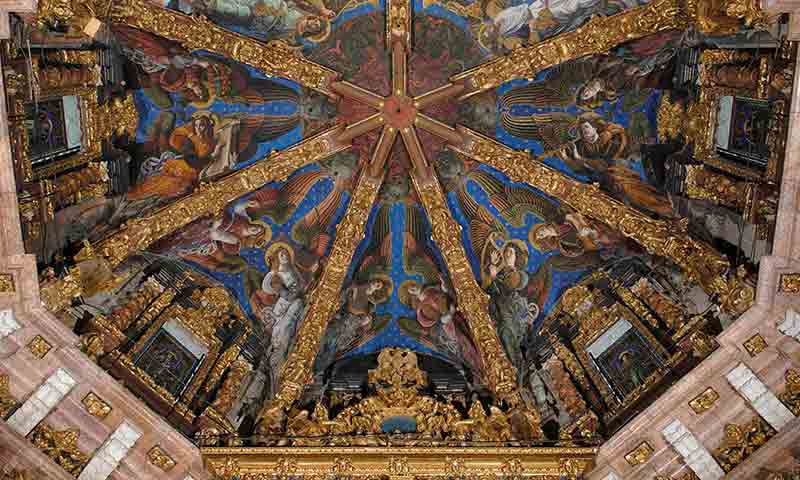
Ya hemos hablado un poco de historia, pero, ¿quieres conocer los auténticos tesoros que esconde la Catedral de Valencia?
Además del Santo Cáliz, en el interior de este edificio hay importantes de obras de arte.
Destacan los frescos del Altar Mayor, que estuvieron ocultos durante muchos años tras unas placas de mármol y que fueron «descubiertos» en 2004 durante las tareas de mantenimiento y limpieza.
Estas pinturas al fresco son de estilo renacentista, y muestran a diez grandes ángeles con instrumentos musicales que llaman la atención por sus colores “vivos”.
Seguramente, estos trabajos fueron encargados por el Papa Borgia, de origen valenciano.
Francisco de Goya
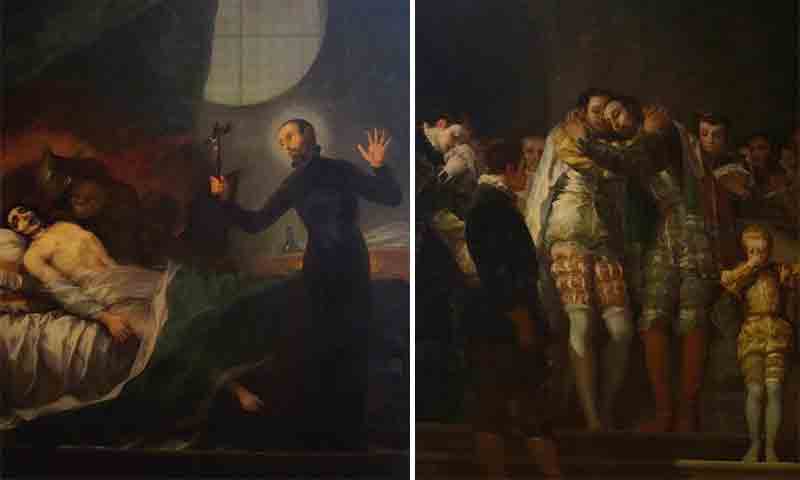
Otra de las joyas artísticas que esconde este monumento son dos cuadros de Francisco de Goya, un reconocido pintor español.
Las obras abordan la figura de San Francisco de Borja: en una de ellas, el santo se despide de su familia en el Palacio Ducal de Gandía y, en la otra, asiste a un moribundo impenitente.
Además de arte, la Catedral de Valencia también es protagonistas historias y leyendas.
Por ejemplo, dentro de una urna, se conserva el que dicen es el brazo incorrupto de San Vicente Mártir, patrón de la ciudad que murió torturado bajo el arresto del emperador romano Diocleciano.
Puerta de la Almoina
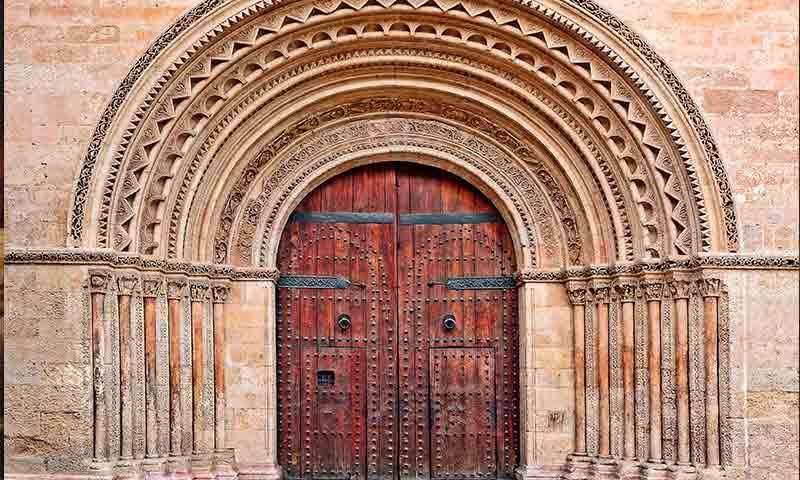
En el exterior, hay una puerta que también relata una curiosa leyenda local.
Si te acercas al arco principal de la puerta de la Almoina o de los Arcos, la más antigua de la Catedral, verás siete parejas de cabezas.
Estas parejas representan a los primeros pobladores que llegaron a Valencia desde Lérida cuando la ciudad fue reconquistada a los musulmanes, en el siglo XIII.
Pioneros en vivir en esta tierra nuevamente cristiana, estos catorce nobles llegaron acompañados, según la tradición, de 300 doncellas que se casaron con los soldados del rey Jaime I, el conquistador de la ciudad.
Bajo sus cabezas esculpidas en piedra, aparecen escritos sus nombres.
¿Un último dato?
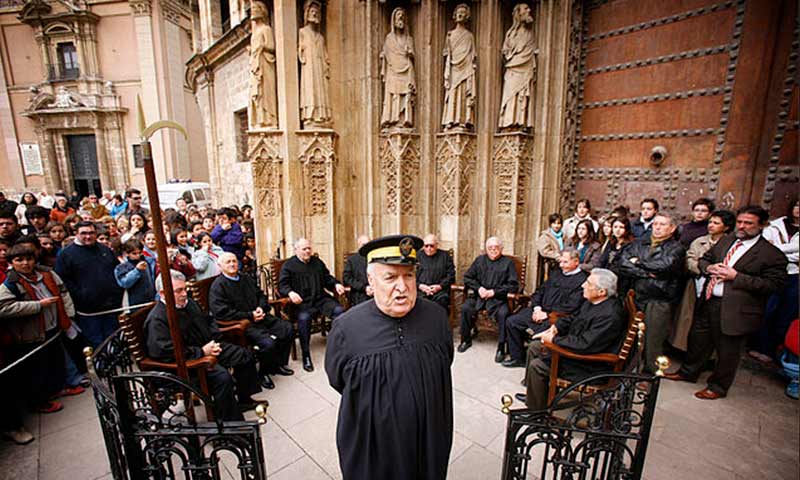
Todos los jueves, en la Puerta de los Apóstoles de la Catedral de Valencia, se reúne el Tribunal de las Aguas, uno de los consejos de ciudadanos más antiguos de Europa.
En sus sesiones, 8 hombres vestidos de negro discuten en círculo sobre los problemas de las 8 acequias de agua de Valencia.
Estas acequias están representadas en la bonita escultura que encontrarás en el centro de la plaza de la Virgen y que está rematada por el río Turia, que aparece esculpido como un dios clásico.
Como ves, la Catedral de Valencia es una visita obligada si vienes a Valencia. Un lugar con historia, arte y rodeado de leyendas.
